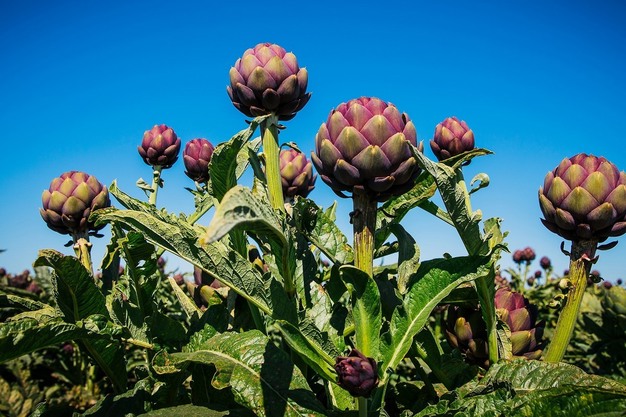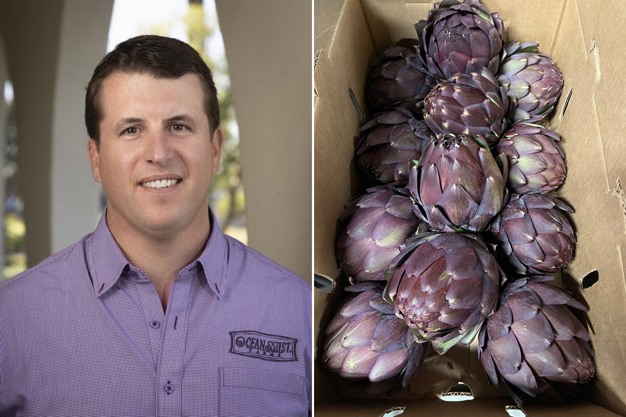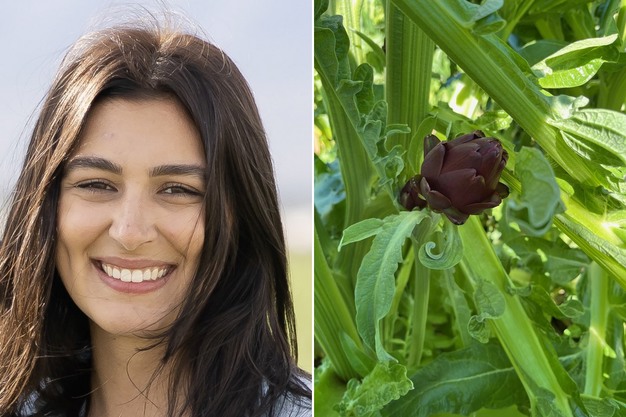The purple artichoke season has begun in Northern California.
 Purple artichoke harvest is starting in Castroville, California this week.
Purple artichoke harvest is starting in Castroville, California this week.
"With our first Castroville harvest slated for this week, we're expecting promotable volumes through the end of April to mid-May with great quality. They are comparable to our winter season purples both in volume and quality coming out of Coachella, California," says Ben Wilson, commodity account manager for Ocean Mist Farms.
This item is part of the grower's larger program on artichokes, a notably fickle product to grow. "When a member of our breeding and development team made a trip to London a decade ago and came across the already popular purple artichoke varieties in the United Kingdom, they purchased some commercially available purple artichoke seeds and brought them back to California," says Meadow Englund, Ocean Mist's quality assurance trial evaluator. In turn, the grower set up its first purple nursery in 2018 in Coachella, California, and began trials.
Early challenges in the new breeding program were centered around the aesthetics of the purple artichokes from the UK. Europe likes artichokes elongated with large spines and faded color. However, U.S. consumers are largely driven by appearance, and that breeding work also helped weed out any undesired characteristics to develop varieties that would meet the company's standards for flavor and eating quality. "Early breeding efforts focused on incorporating signature Ocean Mist artichoke characteristics along with a nice rich, more uniform color to appeal to consumers," says Englund. "These efforts took many years as each cycle from planting to seeding to putting that harvested seed back in the ground takes one full year." (It's important to note that this is not genetic modification or GMO, something the grower has never practiced. Instead, this is part of traditional breeding processes such as manual cross-pollination.)
 The new crop of purple artichokes is comparable to the winter season purples both in volume and quality says Ben Wilson, commodity account manager for Ocean Mist Farms.
The new crop of purple artichokes is comparable to the winter season purples both in volume and quality says Ben Wilson, commodity account manager for Ocean Mist Farms.
The breeding process
In all, after 10 years of selections and breeding into those original lines, the company now has its 200+ nursery varieties that are much closer to the company's standard. Ultimately the goal is to find a purple artichoke that can successfully grow in both growing regions for the entire season so Ocean Mist can offer year-round availability as it has with its green artichokes. "Nowadays, our Gold Standard purple artichokes are grown largely from seed we developed, many of which are now patented proprietary varieties," says Englund. "We produced over 200 pounds of purple seeds last year in a continued effort to grow our purple artichoke program. We're advised that of the over 200 varieties we are currently trialing, only about one percent will meet their standards and make the cut for continued development."
 Meadow Englund, Ocean Mist's quality assurance trial evaluator says the company produced over 200 pounds of purple seeds last year in a continued effort to grow its purple artichoke program.
Meadow Englund, Ocean Mist's quality assurance trial evaluator says the company produced over 200 pounds of purple seeds last year in a continued effort to grow its purple artichoke program.
The commercial crop available is an annual crop grown from seed every year. This process starts in the greenhouse and after 40 days, the seedlings are transplanted to fields in Castroville, California in the spring and summer months. In the fall, green and purple artichoke production moves to Coachella, California for fall and winter production. "This allows us to offer virtual year-round availability on green artichokes but it also affords us the opportunity to grow and harvest more purple artichokes extending that season as much as possible," says Englund.
In turn, the commercial availability of purple artichokes has generated strong demand for the seasonal item. To help move product, the grower is also conducting a social media campaign and has POS materials for retailers that can be ordered via its website.
 For more information:
For more information:
Lori Bigras
Ocean Mist Farms
[email protected]
https://www.oceanmist.com/
